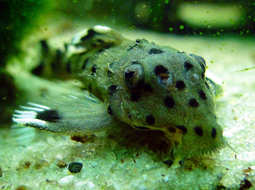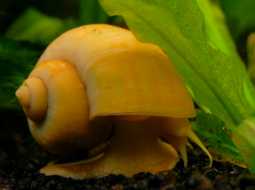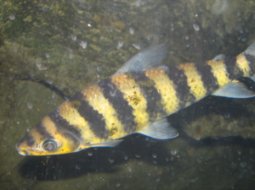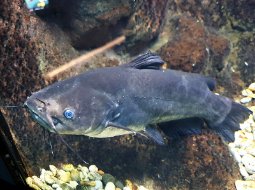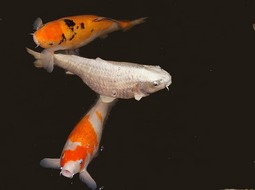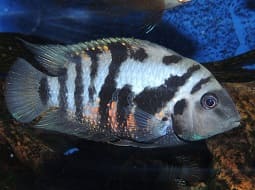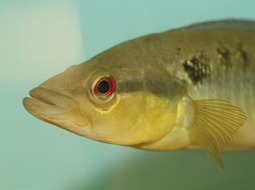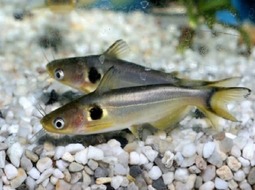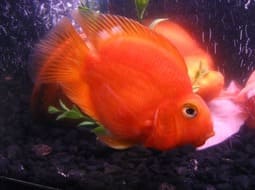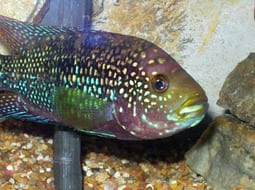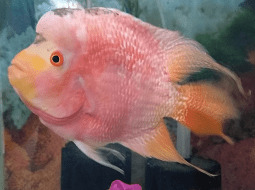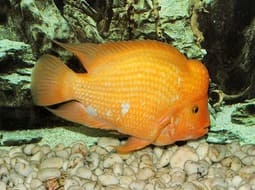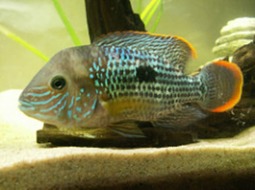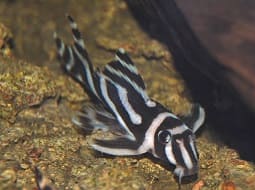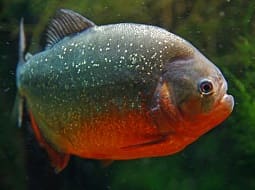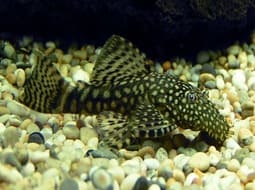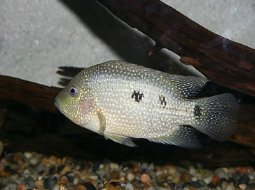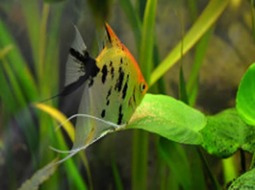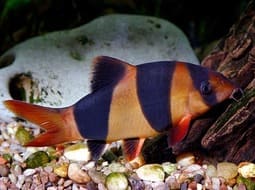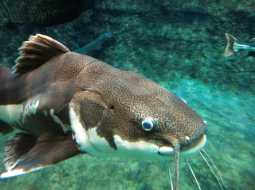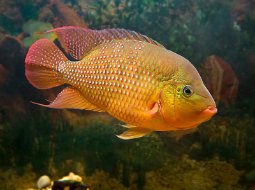
Loading Aqualapp ...
Care and Compatibility of Pangasianodon hypophthalmus - Pangasianodon hypophthalmus
Introduction
The Pangasianodon hypophthalmus, commonly known as the Pangasius or Iridescent Shark, is a freshwater fish native to Southeast Asia. It is recognized for its long, cylindrical body resembling a shark and its metallic silver coloration. It can grow to impressive sizes, reaching up to 1 meter in length under ideal conditions. Due to its size and special requirements, a large and properly filtered aquarium is recommended to keep them.
Behavior
The Pangasianodon hypophthalmus, also known as Pangasius or Iridescent Shark, is known for its calm and peaceful nature. It is a shy fish and often spends most of its time swimming in the lower parts of the aquarium. It is generally sociable and can coexist with other fish of similar size. However, it is important to provide them with enough space and hiding spots to make them feel secure. The Pangasianodon hypophthalmus is mainly nocturnal and may become more active during the night.
Sexual Dimorphism
Sexual dimorphism in Pangasianodon hypophthalmus is minimal and difficult to distinguish. Both males and females have a similar appearance. During the breeding season, they may exhibit courtship and spawning behaviors in pairs.
Reproduction
The reproduction of Pangasianodon hypophthalmus occurs in open waters during the rainy season. They are oviparous fish, and the eggs are incubated and protected by the parents. However, breeding in captivity can be challenging and requires specific conditions to be successful.
Aquarium Conditions
Pangasianodon hypophthalmus, commonly known as pangasius or iridescent shark, is a freshwater fish that requires a very large aquarium or pond with plenty of swimming space. It prefers warm and well-oxygenated water. Aquarium décor should be minimal to allow unrestricted movement. Maintaining water quality is crucial and providing a varied diet.
Feeding
When it comes to feeding, the Pangasianodon hypophthalmus is an omnivorous fish and accepts a variety of foods. They can be fed with flake foods, pellets, frozen foods such as shrimp and mosquito larvae, as well as live foods like worms and small crustaceans.
Complexity
Caring for Pangasianodon hypophthalmus can be challenging due to its size and space requirements. They are fast-growing fish and can reach considerably large sizes. They require a powerful filter and regular water maintenance. They are omnivores and accept a variety of foods.
In case you need more help, or if you want to know into any topic related to the Pangasianodon hypophthalmus (Pangasianodon hypophthalmus) and even any other species you can use the forums to ask what you need.
To do an analysis more detailed about coexistence and behavior of Pangasianodon hypophthalmus (Pangasianodon hypophthalmus) use the Aquarium simulation tool, if you do this you can test different ways to combine the Pangasianodon hypophthalmus with other fishes giving the dimensions and space on you aquarium, on this way you can known the optimal configuration for keep the fishes that you want.
You can also find out the 32 species compatible with the Pangasianodon hypophthalmus (Pangasianodon hypophthalmus) can live together.
Note: The parameters of the water such as PH and temperature are also used to calculate the compatibility of the species.
Compatible species (32)
Compatible (4 Species)
Compatible without any restriction
Similar Sizes (7 Species)
They can coexist if they are the same size or very similar sizes, it does not work in all cases, there may be exceptions.
With Reservation (11 Species)
Compatible in some cases, it depends on the nature and personality of the fish.
Considerable size difference (6 Species)
They can coexist while they are similar in size or the size difference is not very abysmal, since as the fish grows it increases the chances of eating its partner that did not grow much.
Compatible if space is enough (4 Species)
They can coexist together if the aquarium they share is large and spacious enough for both species to feel good, as some fish may attack others to feel that they have little space and try to eliminate the competition.
Pangasianodon hypophthalmus
Pangasianodon hypophthalmus

- Ph: 6.8 - 7.2
- Temperature (c°): 24 - 27
- Measures: 100 cm - 150cm
- Aquarium Capacity:
300 Liters - 79 Gallons - Alimentación: Carnivores, Omnivores
- Colores: Black, Gris, White
- Comportamiento: Peaceful
- Habitad: Asian
- Morfología: Thorns or pointed
- Preferencias del Acuario: Logs, Rocks
- Tamaño: Very Big
- Taxonomía: Fish
- Tipo de Agua: Sweet water, Tropical waters
- Velocidad de nado o movimiento: Normal
- Zona de Nado: Aquarium background

